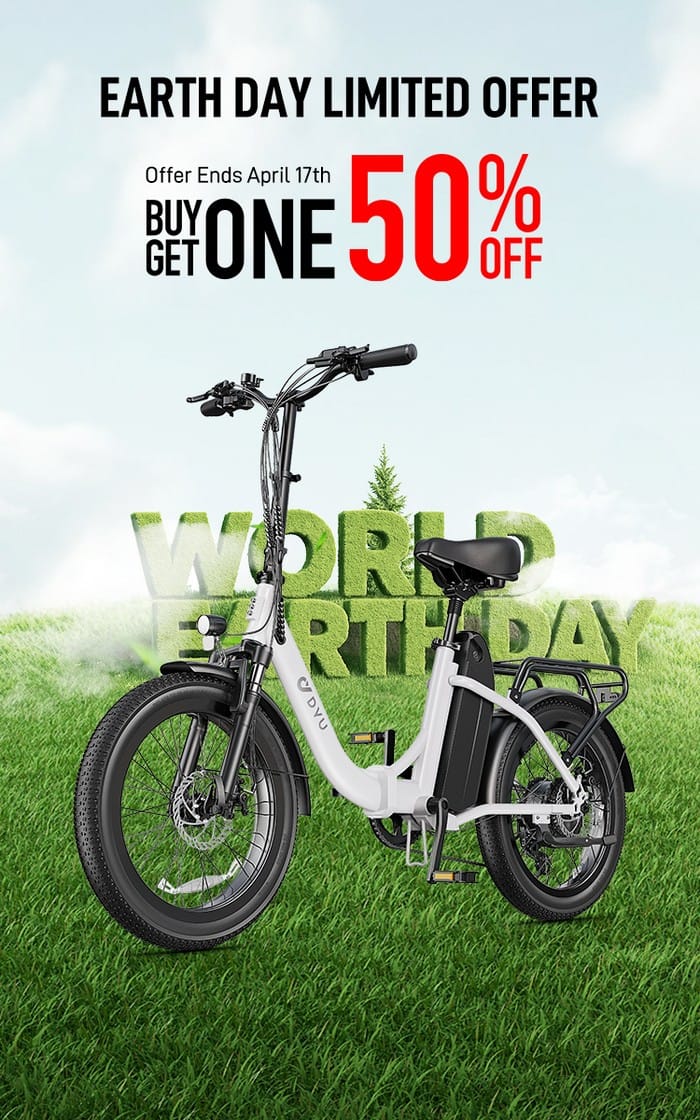Ebikes
E-Bike Weight Loss Trick: How to Turn Your Commute into a Full-Body Workout
If you’re anything like me, you’ve probably wondered: Can riding an electric bike actually help with weight loss? It might sound counterintuitive—after all, isn’t the motor doing the work?
But here’s the trick: an e-bike doesn’t replace exercise—it enhances it. When used smartly, especially for daily commuting, an e-bike can become a powerful tool for sustainable fitness, fat-burning, and even stress relief. In this post, I’ll share how I turned my own commute into a daily full-body workout, and how you can do the same.
1. Why Riding an E-Bike Can Actually Help You Lose Weight
Let’s clear up one big myth: e-bikes don’t mean you stop pedaling. In fact, they encourage you to ride more often and further than you would on a traditional bike. Most e-bikes come with pedal assist, meaning you’re still doing the work—just with a little help.
Here’s how that matters for weight loss:
- Calorie Burn: Even on low assist, you’re burning around 300–500 calories per hour.
- Consistency: You’re far more likely to ride daily because you can manage hills, fatigue, and distance better.
- Sustainability: It’s low-impact, making it ideal for people easing into fitness or returning after injury.
I used to struggle to ride to work consistently on a regular bike. Too many hills. Too many excuses. My e-bike removed those barriers—and once I started riding every day, the weight loss followed naturally.
2. How to Turn Your Commute into a Daily Exercise Routine

You don’t need a training plan to start using your e-bike for fitness. You just need your regular commute and a few clever tweaks.
Here are a few simple ways I transformed my ride into a calorie-burning habit:
| Trick | Description | Benefit |
|---|---|---|
| Vary Assist Levels | Start with higher assist, then lower it mid-ride to push your effort. | Builds endurance and keeps heart rate elevated. |
| Add a Detour | Extend your route by 10–15 minutes through a park or bike path. | Adds extra active time without much effort. |
| Sprint Intervals | Choose sections where you pedal hard without assist. | Boosts metabolism and mimics HIIT. |
| Track Your Rides | Use apps like Strava or Komoot to set weekly goals. | Keeps you motivated and accountable. |
Even with just 30–40 minutes a day, you’re creating a sustainable movement routine. And unlike gym sessions, it doesn’t feel like a chore.
3. Full-Body Engagement: Tips for Working More Than Just Your Legs

Cycling is leg-heavy, sure—but your entire body is in play if you ride with awareness. I’ve found a few simple habits that help activate more muscle groups during my commute:
- Engage your core: Keep your posture upright and avoid leaning on the handlebars.
- Stand on the pedals occasionally: Especially uphill or at lights. This brings in your glutes and calves.
- Use a backpack instead of a rack: Safely carrying a small load helps engage your back and shoulders.
- Add short walking pushes: If your route includes steep climbs, walk and push your e-bike occasionally—especially with heavier fat tire models.
It’s also worth investing in a bike with front suspension, so you get a more dynamic ride without risking joint strain. You’ll feel more connected to the road, and your body naturally works harder to balance and steer.
4. Choosing the Right E-Bike for Your Weight Loss Goals
Now, let’s talk about gear. Not all e-bikes are created equal—and if you’re hoping to burn fat and get fitter, you’ll want a model that encourages movement, not just comfort.
Here are a few factors I recommend keeping in mind:
| Feature | What to Look For | Why It Matters |
|---|---|---|
| Pedal Assist Levels | 3 to 5 levels | Lets you gradually reduce assistance as fitness improves |
| Bike Weight | 18–30 kg (light-to-mid range) | Heavier bikes offer resistance but may be tough to handle |
| Tire Type | Road or hybrid for speed, fat tires for stability | Fat tires add resistance = more calories burned |
| Removable Battery | Yes | Makes daily charging more convenient |
| Upright Geometry | Comfort or hybrid frame | Encourages good posture, better core use |
For example, the DYU FF500 Fat Tire Folding E-Bike is a great all-rounder for fitness-minded riders. It has wide 20″ x 4″ tires that create extra resistance—great for calorie burn—and a foldable frame, so it fits neatly in flats or car boots. With 5 pedal-assist levels and a 48V battery, it offers a balance of power and effort that works well for daily use without removing the fitness challenge.
Whether you want to tackle gravel trails or urban hills, choosing the right e-bike can make your fitness journey feel effortless—literally.
BUY DYU FF5005. Staying Motivated: Tracking Progress and Building a Routine That Sticks
Weight loss is never just about the equipment—it’s about building a habit. And when your exercise happens during your commute, it becomes part of your life instead of an “extra task.”
Here’s what worked for me:
- Set weekly ride goals: 60–90 minutes of active commuting a day is more than enough.
- Celebrate small wins: Feeling less out of breath on hills? Clothes fitting better? That counts.
- Track improvements: Even a simple odometer or a free app will show progress.
- Ride socially: Join local e-bike groups or challenge a friend to a ride goal.
You don’t need a smartwatch or a heart rate monitor to know it’s working. You’ll feel it—in your legs, your clothes, your mood.
If you’re more into visual feedback, tools like MapMyRide offer calorie estimates and route planning that can help keep things interesting week after week.
Final Thoughts: Ride, Sweat, Repeat
An e-bike isn’t a magic bullet for weight loss—but it is a brilliant way to make movement part of your daily life. It takes the pain out of uphill climbs and long distances while still offering all the benefits of cycling: calorie burn, improved mental health, and a stronger body.
The real “weight loss trick” is this: find something you want to do every day.
For me, that’s been hopping on my e-bike, rain or shine, and making every commute count.
🚴 Ready to Ride Your Way to a Fitter Life?
If you’ve been thinking about getting more active but don’t know where to start, an e-bike might be just the nudge you need. Take a look at commuter-friendly models like the DYU FF500, or explore more fitness-focused options using this e-bike comparison tool.
Start small. Ride smart. And remember—it’s the journey that transforms you.
FAQ
Can you really lose weight using an e-bike?
Yes. Even with pedal assist, you’re still burning calories—typically 300–500 per hour—especially if you ride regularly and reduce motor assistance over time.
How do I turn my daily commute into exercise with an e-bike?
Lower the assist level, add small route detours, include short sprint intervals, and track your rides. Small changes add up to real fitness gains.
Do fat tire e-bikes help with weight loss more than regular ones?
They can. Fat tires increase rolling resistance, which means your body works harder—ideal for burning more calories.
What kind of e-bike is best for fitness-focused commuting?
Look for a lightweight model with adjustable pedal assist, a removable battery, and upright geometry. The DYU FF500 is one good example if you want extra resistance and portability.
How do I stay motivated to use my e-bike regularly?
Set small weekly goals, track your progress with apps, and make riding part of your routine. Commuting with a purpose helps turn exercise into a habit.



























































I tried the standing pedaling tip. It’s tough at first, but really works different muscles. Thanks for sharing!
Love how these ideas make the most of otherwise wasted commute time. Can’t wait to try the interval training!
“Full-body workout” is a stretch. Mostly legs, even with the core tips. Need more upper-body moves.